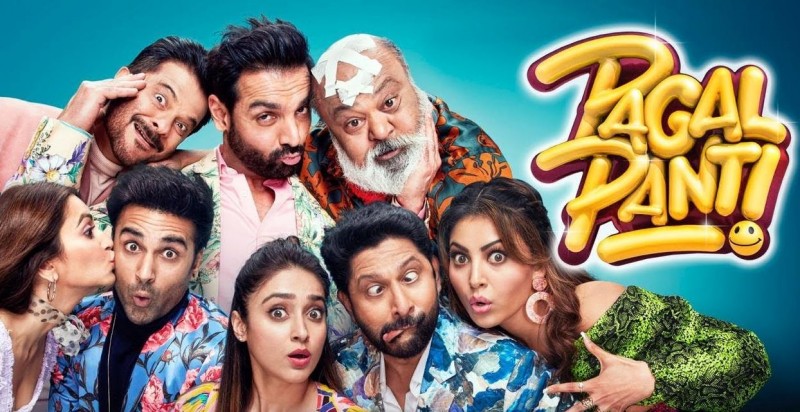
Indian cinema is no stranger to successful franchises that win over viewers' hearts with their poignant stories, irresistible characters, and sense of humour. The "Welcome" series, renowned for its slapstick humour and outrageous characters, was one such franchise that made us laugh out loud. When news broke that a third episode, dubbed "Welcome to the Jungle," was being developed, fans of the show became very excited. The filmmakers chose to go in a different direction as the project developed, though, and the result is a brand-new, thrilling comedy called "Pagalpanti." The development of "Pagalpanti" from its original idea as a part of the "Welcome" franchise to the finished product that thrilled audiences will be discussed in this article.
It's important to comprehend the history of the "Welcome" franchise before exploring "Pagalpanti's" metamorphosis. The franchise is known for its memorable characters, chaos, and humour. The show, which is helmed by Anees Bazmee, centres on the antics and humour of Majnu and Uday Shetty, who are portrayed by Anil Kapoor and Nana Patekar, and their exploits within the realm of organised crime.
Its debut film, "Welcome" (2007), became an enormous hit and is still regarded as a cult classic in Indian comedy filmmaking. Famous characters like Majnu and Uday were introduced, and they quickly won over fans. With the return of important characters and the introduction of new ones, such as John Abraham's portrayal of Ajju Bhai, the 2015 sequel "Welcome Back" aimed to recreate the magic of the original picture.
The promise of even more humour and chaos in the third installment, "Welcome to the Jungle," had fans excited.
Changing Direction: "Pagalpanti" instead of "Welcome to the Jungle"
The original "Welcome to the Jungle" film promised to broaden the "Welcome" franchise's scope and steer it in a different direction. A thrilling and exciting plot was hinted at by the title alone, which suggested an exciting and wild setting. But the filmmakers quickly saw that in order to maintain the series' relevance and appeal, they needed to take a new tack.
The evolving Indian film industry and audience expectations were two of the most important factors that influenced this choice. Indian consumers now expect more complex and diverse content due to their evolving tastes. There was a chance that the "Welcome" series would grow stale and formulaic, despite its allure. The franchise's writer and director, Anees Bazmee, knew that these dynamics would change and that they would.
The filmmakers decided to forgo the "Welcome to the Jungle" concept and instead make a brand-new comedy movie called "Pagalpanti." This was a dangerous decision. This choice, despite the fact that it meant saying goodbye to cherished characters and a compelling premise, was evidence of their dedication to producing new and inventive material.
With the addition of a fresh and thrilling plot, "Pagalpanti" became a stand-alone comedy while maintaining the core elements of the "Welcome" series. Anees Bazmee, a veteran of the comedic genre, directed the movie. Pulkit Samrat, Anil Kapoor, Arshad Warsi, John Abraham, and Ileana D'Cruz were among the many famous actors in the film's cast.
The stories of "Pagalpanti" revolve around three friends—Jay, Chandu, and Junky—who are played, respectively, by John Abraham, Anil Kapoor, and Arshad Warsi. As they track down a gangster and his gorgeous daughter, they find themselves in a series of hilarious predicaments. Although the film adds a new layer of situational comedy to keep the audience entertained, it keeps the slapstick humour and quirky characters that made the "Welcome" series known.
A fresh perspective was added to the movie with the casting of John Abraham, who did not appear in the first "Welcome" series. He gave "Pagalpanti" a new lease on life with his captivating and adaptable acting abilities and perfect comic timing. A major factor in the success of the movie was the chemistry between the new and old cast members.
Critics gave "Pagalpanti" varying reviews when it first came out; some loved the comedy and acting, while others thought the story was confusing. On the other hand, audiences searching for a lighthearted and enjoyable comedy experience found it appealing. The movie's performance at the box office further cemented its reputation as a hit comedy.
"Pagalpanti" stood out in particular because it used humour to engage viewers while addressing the shifting standards of contemporary Indian filmmaking. In the end, it was a smart move for the filmmakers to depart from the "Welcome" franchise because it gave them the opportunity to make something fresh and thrilling while keeping the spirit of the beloved original films.
The transition of "Pagalpanti" from a stand-alone comedy adventure to the third part of the "Welcome" series is a perfect example of how Indian film is changing. It emphasises how crucial it is for filmmakers to adjust to the shifting preferences and demands of their audience, even if doing so requires taking chances and letting go of beloved characters and plot points.
"Pagalpanti" is an example of the ingenuity and inventiveness of the Indian film industry, as it skillfully brought new humour that appealed to both newbies and ardent "Welcome" series viewers. It is an admirable achievement to be willing to venture into uncharted territory and produce something fresh and exciting in the world of Indian cinema, where franchises frequently rule the roost. "Pagalpanti" serves as a reminder that comedies can change and adapt to the times without losing their essential charm and humour, just like any other genre can.
'Nauker' (1979) and Jaya Bhaduri's Memorable Comeback on silver screen
Runaway Brides Take Center Stage: Shaadi Mein Zaroor Aana Joins the Trend